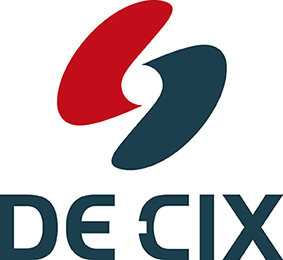The Digital Bank: Why Innovative Financial Institutions Urgently Need an Interconnection Strategy
Dr. Thomas King, CTO at DE-CIX, shows why interconnection via an Internet Exchange is so important for the future of banking.

©Dilok Klaisataporn| istockphoto.com
Financial apps for payment, trading and the like have become an integral part of everyday life, with almost two-thirds of people in Germany and nine out of ten in Spain using them, according to a DE-CIX survey. However, traditional banks are still underrepresented in this segment. Integrated offerings can be an opportunity to become more active in this promising market. In this scenario, established financial institutions with their strong brands could act as aggregators of various services. But this requires a robust ecosystem in which the various partners can exchange data in a secure and trustworthy way.
Traditional companies that fail to digitalize successfully will eventually be overtaken by agile competition from the web. And the financial sector, where many innovations have been implemented in recent years, is no exception. A very good example is the UK neobank Revolute, which became the most highly valued start-up in Europe in 2022, overtaking the payment services company Klarna. The Solarisbank’s banking-as-a-service platform is another example of outstanding innovation in the sector. This company’s full banking license now makes it possible to develop digital financial offerings entirely without long-established commercial banks in the background. The latter must now take decisive steps towards digitalization in order not to be overrun by modern developments. However, the established institutions have one major asset that sets them apart from the new competition: their names and their tradition, which mostly stand for trust. A bank that digitalizes their services successfully could act as a “trusted gateway” to today’s modern financial services by pre-selecting trustworthy services for the customer and guaranteeing security and quality.
What do banking customers want today?
The success of financial apps continues unabated. Surveys undertaken for DE-CIX last year show that two out of three (64 percent) of Germans use services such as banking apps, PayPal, Klarna, or Trade Republic. In Spain, they are even more ubiquitous: Almost nine out of ten people (88 percent) use financial apps.
Users in both markets see the greatest advantages in time independence (Germany 68 percent, Spain 69 percent). User-friendliness (66 percent) and location independence (58 percent) are especially important to the German market. In Spain, even more people (81 percent) find the ability to operate their financial services via phone from anywhere, location independently, important. Financial apps are generally viewed as easy and convenient to use, according to 63 percent of respondents in Spain and 66 percent in Germany. Certainly, the Covid-19 pandemic has also given a further boost here.
Unsurprisingly, digital offerings are particularly popular among younger target groups – 74 percent of 25 to 34-year-olds use them in Germany. In Spain, the highest rate is among the 35 to 44-year age group, at 30 percent. Perhaps less expected is the fact that these apps are also used by more than half (58 percent) of respondents over the age of 55 in the German market and 12 percent among the 55 to 65-year age group in the Spanish market. This means that financial apps must be designed in such a way that they meet with acceptance from as broad a section of the population as possible.
An all-in-one banking app
Comparing the financial sector and its digital offerings with other industries, a rather fractured structure can still be seen. A one-stop-shop, or an “Amazon of finance” if you will, has not yet become established. Consumers usually have one or more payment apps, then possibly a trading app, and then, on top, an online banking app from their bank. In Germany, a third of consumers across all age groups (28 percent) would prefer an all-in-one solution. The advantages cited by these respondents include an overview of their entire financial situation (62 percent), no need to switch between websites/apps (59 percent), and independence of location and time (57 percent). Younger people are generally more open to a central app: 42 percent of 25 to 34-year-olds and 39 percent of 18 to 24-year-olds would take advantage of such an offer. In the 25 to 34-year age group, trading also appears to be an important feature; at 35 percent, a significant number of survey participants in this age group would like to see this kind of functionality. It can therefore be assumed that the desire for centralized offerings will become even more important in the future as more and more young and digitally affine people climb the career ladder and become more closely involved with finance. These young professionals will then be used to a one-click ordering process, AI assistants, and all the other conveniences of the digital age. They will also expect simple, intuitive, yet secure offerings in finance – no easy task.
Getting the connectivity right
The European PSD2 payment services directive has laid an important foundation for the aggregation of financial services. The opening of the interfaces (APIs) defined in the EU directive is what allows access to account data from external providers in the first place – of course, only after users have given their consent. This has created exciting new business opportunities in the financial sector. However, it must be remembered that communication between these interfaces does not take place directly and in a vacuum. As is always the case in the digital world, data must be transferred between two or more points. Especially in a highly sensitive area like the financial sector, it is important to understand the path this data takes.
Until now, banks and financial intermediaries mostly relied on Multiprotocol Label Switching (MPLS) networks to connect with partners. This technology does have advantages over IP routing. Put simply, it is possible to precisely predict the path of data packets, which offers advantages in terms of security and performance. But this predetermined path is still cumbersome. This results in the most obvious disadvantages of MPLS connections: they are expensive and difficult to set up. Today’s partner ecosystems, on the other hand, demand a level of performance and flexibility that this type of connection no longer meets. So, there is a need for modern alternatives that are safe, flexible, and efficient.
The modern alternative: interconnection via an Internet Exchange
A promising alternative is the direct interconnection of networks through an Internet Exchange or a distributed interconnection platform – this is referred to technically as peering. “Peering” can in principle be done by anyone with a network, not just Internet service providers with their large transport networks – even banks can connect directly to an Internet Exchange (IX). This allows them to connect directly with partners without the data having to spend a long time finding its way through different networks to its destination. An ideal use case would be interconnecting the bank’s network with the networks of the major Internet Service Providers (ISPs), in order to connect customers to their bank in the fastest and most secure way. Here we are talking about bilateral connections (an agreement between the bank and the ISP to exchange data traffic), which are ideal for this purpose. Elsewhere, however, the requirements go beyond this: Namely, when it comes to the complex linkages between various partners.
For example, if a bank wants to “build” an integrated financial app, it needs data connectivity with an ecosystem of payment and trading providers, among others. Ideally, this is realized via a hub-and-spoke approach. A modern interconnection platform can serve as such a central point where all threads come together. It must then be guaranteed that all communication within this construct remains direct, dedicated, secure, and follows certain rules (e.g., regarding data protection). What are known as Closed User Groups can exactly meet these requirements. A Closed User Group enables secure, flexible, and high-performance interconnection of multiple partner networks. In other words, a kind of “mini-Internet” is set up here that serves one specific use case and is tailored entirely to the individual application. This has the advantage that (in this case) the bank, as the owner of the Closed User Group, can itself then define the rules for data exchange. This is precisely the concept that can also be used to alleviate the headaches that current regulations are causing banks. The PSD2 directive, for example, obliges banks to provide third-party service providers with access to their customers’ bank accounts via an API – but in so doing, they must comply with the highest security standards. One way to achieve this is to provide access within a Closed User Group. The bank’s API is only accessible to third-party service providers and not to everyone on the Internet. This ensures maximum control: Institutions can specify compliance with data protection requirements on the network side, APIs are protected against DDoS attacks, and hacking attacks are also made much more difficult.
Optimally interconnected in all directions
Banks achieve the best connectivity ecosystem for modern, integrated financial apps by relying on a combination of peering and Closed User Groups. By means of peering, the networks in which the consumers are located can be directly connected to the bank’s network, and all relevant partners can be interconnected in a Closed User Group. Of course, different Closed User Groups can also be set up for different applications to ensure consistent separation. In this way, the connections that are needed can be established for every application.
* On behalf of DE-CIX, YouGov surveyed over 2,000 people in Germany between March 18th and 21st, 2022, representative of the population by age 18+, gender and region; and Alpha Research conducted an online survey of 1,000 people in Spain between March 30th and April 1st, 2022, representative of the population in terms of age between 18 and 65 years old, gender, and region.
Dr. Thomas King has been Chief Technology Officer (CTO) at DE-CIX since 2018, and a Member of the DE-CIX Group AG Board since 2022. Before this, King was Chief Innovation Officer (CIO) at DE-CIX, starting in 2016. He has been instrumental in his role at keeping DE-CIX at the forefront of technological development of Internet Exchanges, establishing DE-CIX as a neutral Cloud Exchange, pushing the boundaries of what is possible in terms of high-bandwidth access technology and security solutions for IX platforms, and trailblazing the automation of IX services with the implementation of patch robots, the development of the DE-CIX API, and overseeing the DE-CIX self-service customer portal. Thomas King has also overseen the technical implementation of the international expansion in markets spanning from North America to Europe, the Middle East, India, Southeast Asia, and most recently Africa.
Please note: The opinions expressed in Industry Insights published by dotmagazine are the author’s or interview partner’s own and do not necessarily reflect the view of the publisher, eco – Association of the Internet Industry.





